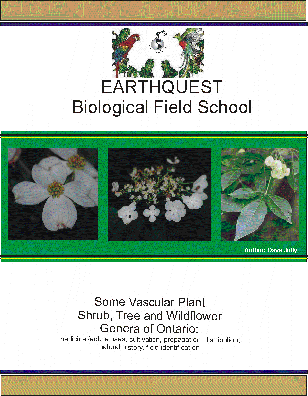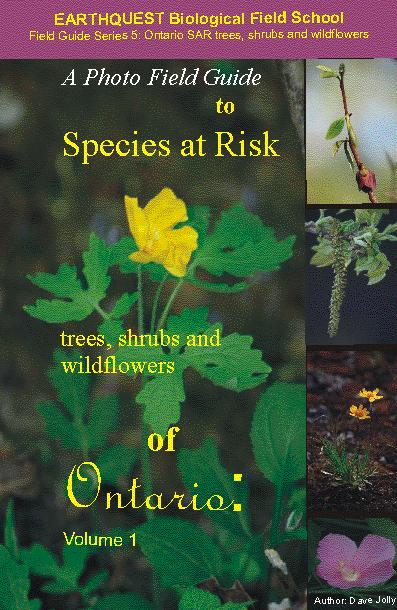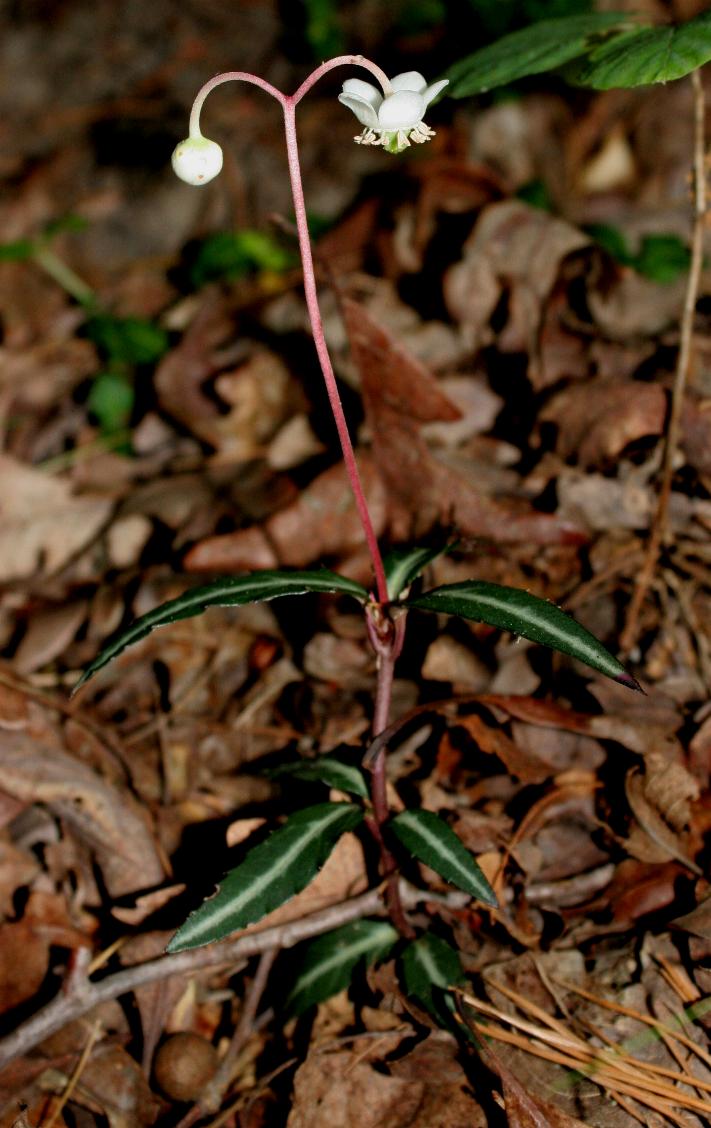|
Now available; a new Tree and Shrub book authored by the Senior Instructor of the EARTHQUEST Biological Field School - Dave Jolly
People considering internships and jobs with EARTHQUEST or work in the environmental industry are strongly urged to purchase this book for only $200.00 CND + shipping and handling
To order please contact us for more details

Photos: Dave Jolly
Level 3 FBT SAR and rare plants of Ontario course - $800.00 CAD (regular price); $700.00 CAD (discounted price)Date: October 5 & 6, 2019 (2 days) Location: TBA - total of 14 hours (incl. field trips/site visits)
As a result of obtaining funding from TD/Canada Trust's Friends of the Environment Foundation (FEF) we have designed a Level 3 course which focuses on species level identification of Ontario's Species at Risk and rare vascular plants. This course will cover confusing look-a-like common terrestrial/wetland and some aquatic plants which may easily be misidentified with Species at Risk or rare plants. For example, Crooked stemmed aster (Symphyotrichium prenanthoides) versus Purple stemmed aster (Symphyotrichium puniceus). Learn how to differentiate based on visual cues and features of the plant such as shape and size of upper, middle and lower leaves, presence of hairs on leaves, stem or leaf petioles, habitat/ecosite preferences and other visual characteristics helpful with narrowing down what species, or in some cases - sub-species you may have. Please note, this course covers approximately 20 - 25 species of Species at Risk and rare plants typically found within the 5 forest regions of Ontario that are protected under the provincial and federal Species at Risk Acts (SARA). It is most useful to Species at Risk Biologists, restoration ecologists, resource managers, environmental consultants, provincial and federal government employees working for National or Provincial Parks, etc. It is set up as a 2 day field course with intensive field/site visits serving as field practicums. It is also a really good course for those considering working on projects which involve baseline vegetation surveys/inventories. The cost is $800 + HST and registration is due by 12 Noon on Sunday June 15, 2014
Unit #1: Definition of Rarity
An examination of the global, national, provincial regional and local definitions. The regionally rare plants found within Site Districts 6E and 7E
Unit #2: Field Identification Techniques; Species
We will learn how to identify Species at Risk and rare plants (regionally rare within Ecoregion 7E or locally rare within Site District 7-2) based on shape and size of upper, middle and lower leaves, presence of hairs on main stem, leaves, or leaf petioles, floral structures, leaf margin morphology, etc. In some cases we will examine plants to sub-species level as some sub-species in Ontario are Species at Risk. The idea behind this course is to build up your working/field knowledge of what Species at Risk plants look like in the field along with the variability that you may encounter during field surveys/inventories. This may also be presented in the format of preferred moisture regime, soil type, hydrology, geology and biotic factors so it fits in with conventional Ecological Land Classification and Wetland evaluation methodology and approach.
 How to identify based on leaf shape, arrangement, flower head arrangement, bark structure, fruits/seeds, leaf scars, bundles traces, leaf scales, etc. How to identify based on leaf shape, arrangement, flower head arrangement, bark structure, fruits/seeds, leaf scars, bundles traces, leaf scales, etc.
 Species traits and characteristics Species traits and characteristics
 Habitat preferences and types of ecosites (from Ecological Land Classification methodology) and significant wetland types (from Ontario Wetland Evaluation System methodology) Species at Risk and rare plants may be associated with or found in. Habitat preferences and types of ecosites (from Ecological Land Classification methodology) and significant wetland types (from Ontario Wetland Evaluation System methodology) Species at Risk and rare plants may be associated with or found in.
Unit #3: Confusing species
An examination of some of the common plant species which may be easily confused in the field with look-a-like Species at Risk or rare plants; with photos and field trips/site visits to terrestrial/aquatic/wetland natural areas to reinforce the lesson plan
Unit #4: Exceptions to the Rule
Vascular plants that don't fit the general species level 3 rules of field identification based on the visual cues presented.
Regular price: $800 +HST (non-students & organizations)
Discounted price: $700 +HST (students & non-profits)
Purchase your copy of our new book on SAR plants of Ontario
$150.00 CAD + shipping and handling

Photo: Dave Jolly
for more information or to order please click on;
A Photo Field Guide to SAR trees, shrubs and wildflowers of Ontario - volume 1 book
Ordering: Book reservation form


 E-mail: earthquestcanada@yahoo.com E-mail: earthquestcanada@yahoo.com
Senior Field Botanist & Senior Instructor
D. Jolly, B.Sc.
EARTHQUEST (Canada) for the Environment
Tel: 226-926-1470
ęcopyright EARTHQUEST (Canada) for the Environment
Website designed and maintained by D. Jolly
Last Updated 02/05/2019 | |
|
|



